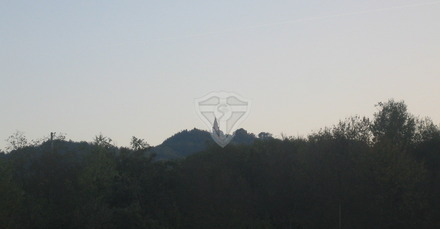to enlarge


or choose the place
from the menu below
 Rome |
 Byzantium |
 Venice |
 Vienna |
 Brioni |
 Smrikve |
 |
 |
 Lindar is a small medieval town located on 461 meters
hilltop above Pazin. This village become famous after its casual involvement in a battle between Austria and Napoleon army
in 1813. Captain Lazaric with his company of volunteers defeated Napoleon army and received from the Austrian Monarchy the
title: Baron of Lindar.
Lindar is a small medieval town located on 461 meters
hilltop above Pazin. This village become famous after its casual involvement in a battle between Austria and Napoleon army
in 1813. Captain Lazaric with his company of volunteers defeated Napoleon army and received from the Austrian Monarchy the
title: Baron of Lindar.





LINDAR – VIRTUAL TOUR
 If you arrive in Lindar from Pazin or you
arrive from Gracisce and Pican direction, you can park the car outside the perimeter of the old town, near to the Church of
St. Catherine that dates back into 1409.
If you arrive in Lindar from Pazin or you
arrive from Gracisce and Pican direction, you can park the car outside the perimeter of the old town, near to the Church of
St. Catherine that dates back into 1409.
This small Gothic church has a characteristic Gothic vault doorway and is painted with Gothic frescoes typical for Istrian paintings of the early 15th century.
The frescoes date back into 1409 as written in glagolitic letters. The best preserved scene is the so-called “Live Cross”.
 It is named “Live Cross” because the ends of the Cross transforms into human hands. On the back
of the church there is an interesting circle stone light window with form of the star.
It is named “Live Cross” because the ends of the Cross transforms into human hands. On the back
of the church there is an interesting circle stone light window with form of the star.
A part of a defence tower not much has remind in the town of its medieval walls and buildings.
Opposite to the church there is a Baxa family Palace with a particular doorway at the entrance of the court-yard.
The tower with a Venetian Lion of St. Mark with open book placed on its façade that you will see in the court-yard is a recent building.
From the top of the tower building you can see some nice stone made roofs of the old buildings of the town.
 Once you exit the court yard on the opposite
side of the entrance doorway you will pass near the small Church of SS. Fabian and Sebastian from 1559 and
the main road will bring you to the north eastern part where the old town ends.
Once you exit the court yard on the opposite
side of the entrance doorway you will pass near the small Church of SS. Fabian and Sebastian from 1559 and
the main road will bring you to the north eastern part where the old town ends.
In front of you there will be the Parish Church of St. Mohor and Fortunato from 1606, built on a place of an older church and expanded in 1860. Opposite to the Parish Church there is 30 meters high bell tower from 1906.